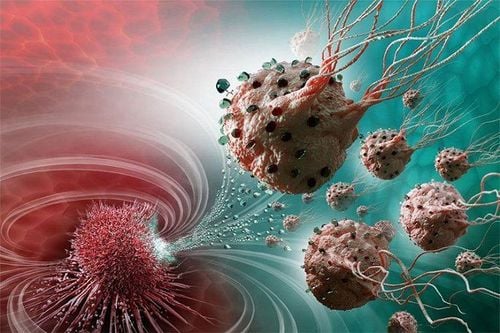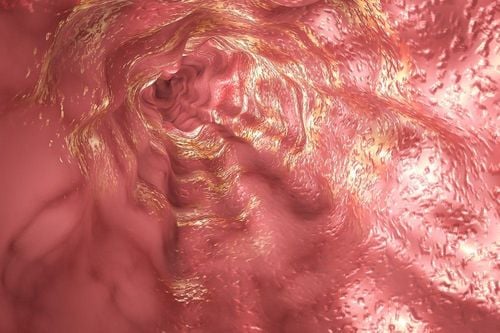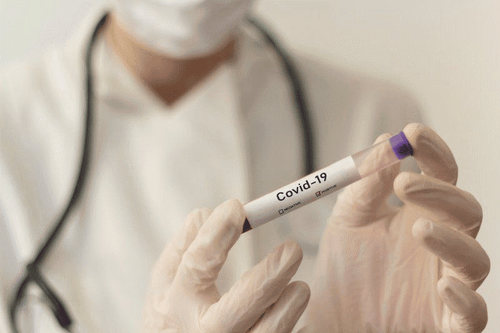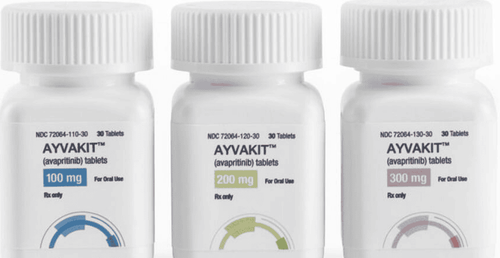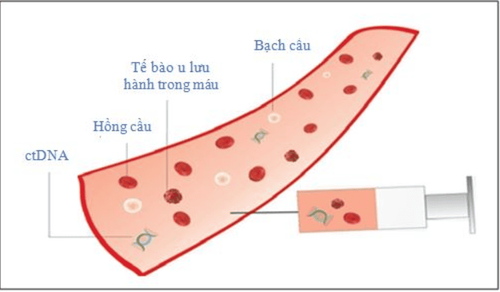This is an automatically translated article.
Posted by Master, Doctor Mai Vien Phuong - Gastrointestinal Endoscopy - Department of Medical Examination & Internal Medicine - Vinmec Central Park International HospitalRecent studies have reported circulating plasma/serum miRNAs as potential diagnostic and prognostic markers in several gastrointestinal cancers - esophageal squamous cell carcinoma, esophageal adenocarcinoma, stomach and colon.
1. Biomarkers in blood
Autoantibodies have attracted interest as serological markers for esophageal cancer, due to their stability and persistence in serum samples. With improvements in antibody detection technology raising the detection limit, there is increasing interest in the utility of autoantibodies as diagnostic and prognostic biomarkers for esophageal cancer. Perhaps the most comprehensively studied is the tumor suppressor gene, TP53. The protein product of TP53 is a nuclear phosphoprotein and in normal human plasma, TP53 protein and anti-p53 antibodies are absent.The p53 mutation can cause the accumulation of non-functional proteins with increased stability and longer half-lives compared to native proteins. Anti-p53 production has subsequently been detected in the tissues, blood, and other body fluids of several types of cancer, including esophageal cancer. A meta-analysis by Zhang et al summarizing the diagnostic value of anti-p53 for esophageal cancer found that esophageal cancer patients had a seven-fold increased risk of plasma anti-p53 positivity. compared with the control group without cancer. However, despite the high specificity, the authors report low sensitivity, suggesting limited clinical application.

2. The role of miRNA sequences in the diagnosis of esophageal cancer
miRNA is a single-stranded, non-coding RNA that can regulate the expression of genes and proteins, miRNAs are highly expressed in stable form, with a high degree of inter-individual consistency in a variety of extracellular fluids including blood. serum and plasma, and has attracted attention as biomarkers for cancer and disease. Recent studies have reported circulating plasma/serum miRNAs as potential diagnostic and prognostic markers in several gastrointestinal cancers - esophageal squamous cell carcinoma, esophageal adenocarcinoma, stomach and colon. Although still an emerging area of research, recent meta-analyses have highlighted the potential of circulating miRNAs in the detection of esophageal cancer.
However, the small number of manuscripts that can be included in the study and the lack of validation studies performed using miRNA markers limit the conclusions that can be drawn for translation application. code. A more comprehensive meta-analysis by Fu et al found that although increased expression of miR-21 and decreased expression of miR-375 were significantly associated with poor overall survival in breast cancer. esophageal cancer, both miR-21 and miR-275 are associated with a low risk.
Circulating miRNAs have also been studied as biomarkers of esophageal adenocarcinoma and pointer status, Barrett's esophagus. In a retrospective study of biostriped serum samples from patients with esophageal cancer, Chiam et al identified five miRNA ratios, derived from ten unique miRNAs capable of discriminating against esophageal cancer. adenocarcinoma of the esophagus compared with non-dysplastic Barrett's esophagus and healthy controls. The prediction accuracy of the miRNA ratio was enhanced with the stepwise addition of the miRNA ratio to the analysis of blood samples of cancer patients, highlighting the potential of biomarker-incorporating approaches to enhance specificity and sensitivity of the test.
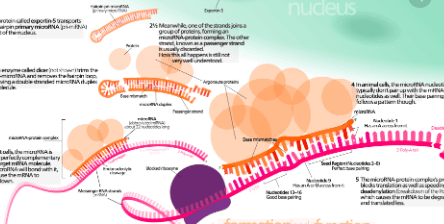
3. Conclusion
Current diagnostic and monitoring procedures for esophageal cancer are invasive, costly, and inadequate for early detection. Recent advances have been made in the development and validation of novel minimal and non-invasive biomarkers for esophageal cancer. Although several new serological markers have been studied, they have not yet been translated into clinical practice. Circulating antip53 and CTCs have shown the most promise as diagnostic and prognostic markers of esophageal cancer, with recent meta-analyses supporting their use. However, the absence of well-designed, robust clinical validation trials in large patient populations has largely limited the power of these meta-analyses. This is highlighted by the lack of differentiation between esophageal squamous cell carcinoma and esophageal adenocarcinoma,Ccyclic miRNAs have emerged as a promising new biomarker of cancer. esophagus letter. Despite their promise, some studies have limited their focus to esophageal squamous cell carcinoma and small clinical cohorts, with more studies focusing on single miRNAs. are combined approaches. Advances in bioinformatics have facilitated the analysis of large, complex miRNA microarray datasets, and future studies are likely to use hybrid approaches to analysis. miRNAs.
Gastrointestinal cancer screening is a scientific and effective measure for early detection of gastrointestinal cancers (esophageal cancer, stomach cancer, colon cancer) and providing a good treatment plan. best. Currently, Vinmec International General Hospital has a package of screening and early detection of cancers of the gastrointestinal tract (esophagus - stomach - colon) combined with clinical and paraclinical examination to bring the most accurate results. maybe.

Gastrointestinal examination with an oncologist (by appointment). Gastroscopy and colonoscopy with an NBI endoscope with anesthesia. Peripheral blood count (laser counter). Automated prothrombin time test. Automated thrombin time test. Activated Partial Thromboplastin Time (APTT) test using an automated machine. General abdominal ultrasound
Please dial HOTLINE for more information or register for an appointment HERE. Download MyVinmec app to make appointments faster and to manage your bookings easily.
References1. Pakzad R , Mohammadian-Hafshejani A, Khosravi B, Soltani S, Pakzad I, Mohammadian M, Salehiniya H, Momenimovahed Z. The incidence and mortality of esophageal cancer and their relationship to development in Asia. Ann Transl Med . 2016; 4:29. [PubMed] [DOI]
2. Bystricky B , Okines AF, Cunningham D. Optimal therapeutic strategies for resectable oesophageal or oesophagogastric junction cancer. Drugs . 2011; 71 :541-555. [PubMed] [DOI]
3. Bandla S, Pennathur A, Luketich JD, Beer DG, Lin L, Bass AJ, Godfrey TE, Little VR. Comparative genomics of esophageal adenocarcinoma and squamous cell carcinoma. Ann Thorac Surg . 2012; 93 :101-1106. [PubMed] [DOI]
4. Bird-Lieberman EL, Fitzgerald RC. Early diagnosis of oesophageal cancer. Br J Cancer . 2009; 101 :1-6. [PubMed] [DOI]
5. Yentz S, Wang TD. Molecular imaging for guiding oncologic prognosis and therapy in esophageal adenocarcinoma. Hosp Pract (1995). 2011; 39 :97-106. [PubMed] [DOI]
6. Jankowski J , Barr H, Wang K, Delaney B. Diagnosis and management of Barrett's oesophagus. BMJ . 2010; 341 :c4551. [PubMed] [DOI]4
7. Roger Yazbeck, Simone E Jaenisch, David I Watson. From blood to breath: New horizons for esophageal cancer biomarkers, World J Gastroenterol. Dec 14, 2016; 22(46): 10077-10083.





